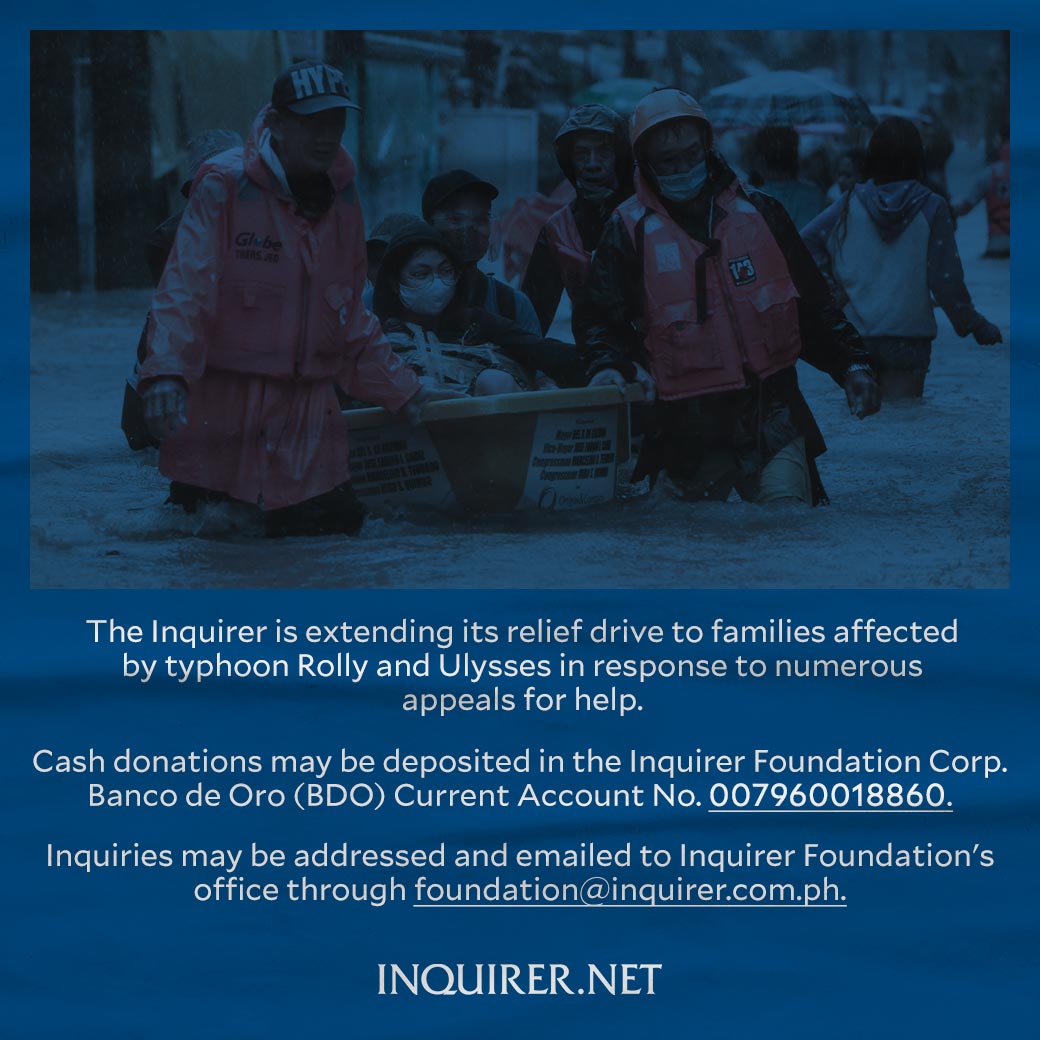Catanduanes: Battered island still on its knees
VIRAC, Catanduanes, Philippines — A surreal landscape of roofless houses and buildings, leafless trees, and pieces of wood and other debris surround thousands who are still homeless and hungry in this capital town nearly a week after Typhoon “Rolly” (international name: Goni) ripped through the island province of Catanduanes.
Flooded farms, toppled trees, power lines and electric posts, twisted steel reinforcements, and gouged roads and broken bridges complete the picture of devastation around the province.
Virac Mayor Sinforoso Sarmiento Jr., who now greets visitors and holds office in the hallway of the damaged municipal building, told the Inquirer on Friday that his constituents badly needed food and temporary shelter.
“Of the 63 villages (of Virac), none can be said to have only been mildly affected,” he said.
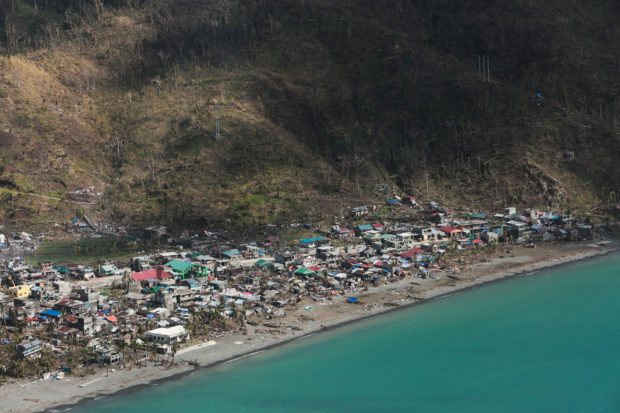
CALM AFTER THE STORM The turquoise waters off this village in Virac, the capital of Catanduanes, are back to being calm and inviting on Nov. 6, nearly a week after Typhoon “Rolly” (international name: Goni) ripped through the island province. Destroying homes along the coastline and uprooting trees on the mountainside, Rolly packed winds so strong that they tore leaves off branches. —MARK ALVIC ESPLANA
Initial assessment
An initial assessment by the local government said over 5,000 houses in Virac (population: 76,000) were destroyed by the typhoon. This number is expected to rise as the assessment by local officials continued.
Rolly, the strongest typhoon in the world so far this year, made its first landfall around 5:40 a.m. on All Saints’ Day near the town of Bato east of Virac with torrential rains and sustained winds of 225 kilometers per hour and gusts that peaked at 280 kph.
It destroyed or damaged whatever was in its path, blowing away the roofs of school buildings where many of the villagers had taken shelter ahead of its landfall.
The winds were so ferocious that roofing sheets were ripped off and looked like they were badly rolled up by giant hands. They also shredded the leaves of coconut and other trees, leaving branches bare and giving no shade under the sun.
Authorities said the typhoon killed six people and one was still missing.
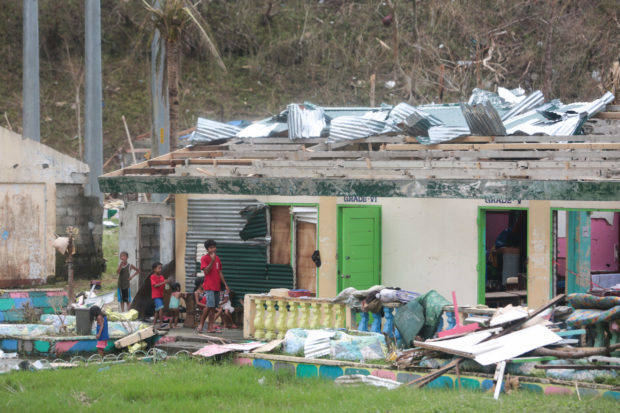
STRONGEST THIS YEAR Typhoon “Rolly” (international name: Goni) packed ferocious winds that blew off roofs of school buildings and destroyed nearly 20,000 homes and other properties in Catanduanes province. —PHOTOS BY MARK ALVIC ESPLANA
Slow flow of aid
It was the worst storm to hit the province in recent memory, Sarmiento said.
Help was slow to reach Catanduanes, which is a two- to four-hour ferry ride from Albay province on the Luzon mainland. Ferry service has been partially restored.
The island of 260,000 people is also accessible by helicopter or light aircraft.
Mobile phone service has been restored by Smart Communications but only for 2G voice and text and only in certain areas.
Sarmiento said only 30 percent of the affected households had received relief supplies.
He explained that most of the local government’s funds for disaster assistance had been used during the first few months of the pandemic lockdown.
“Our responses for COVID-19 were already costly,” he said. “But the good thing about now is that we are getting help from private (groups and individuals).”
He said they were prioritizing relief assistance for residents in the hardest-hit and remote villages.
Sarmiento appealed to the national government and to private groups to send whatever support they could.
“We are not used to asking for assistance. We know how to live with typhoons, but I am appealing to you to help my fellow Viracnons,” he said.
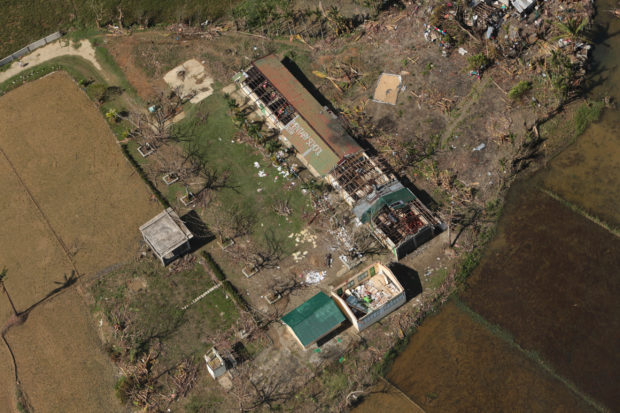
HARD HIT A damaged schoolhouse in Virac, the provincial capital, remains unrepaired almost a week days after Typhoon “Rolly” struck the southern Luzon island.
Long lines
Gov. Joseph Cua told the Inquirer on Saturday that the typhoon destroyed 13,327 houses in other parts of the province and damaged 23,395 more.
The typhoon wrecked all the houses at a relocation site for informal settlers in the village of San Isidro, which was visited by the Inquirer on Friday.
The villagers said they needed food and water more than anything else.
At the Virac town center, long lines of people snaked through debris-littered streets to the money remittance shops, which reopened on Friday.
Roberto Monterola, the provincial disaster risk reduction management officer, said Virac, San Andres, Bato, San Miguel, Baras and Gigmoto were the most severely damaged towns with thousands homeless.
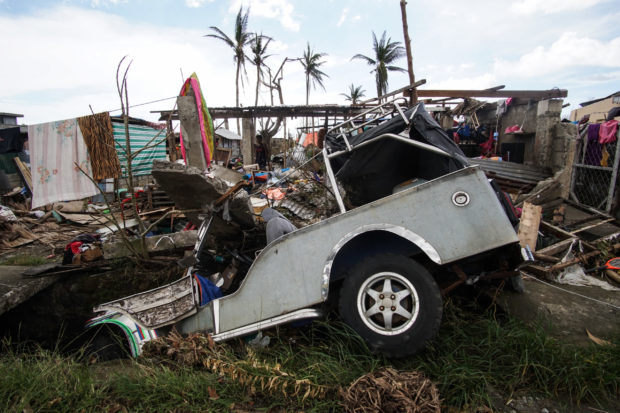
BASIC NEEDS More than temporary shelter, villagers are asking for donations of food and drinking water. Packing winds of more than 225 kilometers per hour, Typhoon “Rolly” was the worst storm to hit the province in recent memory, survivors said.
Growing tired
“Most of the [residents] went home and stayed in makeshift houses made of scrap materials [scavenged from their destroyed homes]. That is the tradition here, most of the people do not stay in evacuation centers after the typhoon,” Monterola said.
An elderly San Isidro resident, Lolita Tolin, like many of her neighbors was drying clothes and beddings that were not swept away by floodwaters and had been salvaged from the muddy debris.
Tolin, 65, said the galvanized iron roofing sheets outside her house still had to be reinstalled.
She said she was growing tired trying to collect what remains of her family’s belongings.
“We have nowhere to sleep and our clothes are all wet,” said the teary-eyed grandmother.
Counting on donations
With a shortage in construction materials, families will have to rely on donations to build their temporary homes.
Emilyn Capistrano, 41, used salvaged tarpaulin as a makeshift roof for her house in San Isidro.
With most of the water supply facilities of the province’s 12 towns damaged, people bought drinking water from shops that sold water.
“We have to line up for almost an hour just to buy potable water from the refilling stations,” said Jefferson Arcilla, a resident of Barangay Francia in Virac town.
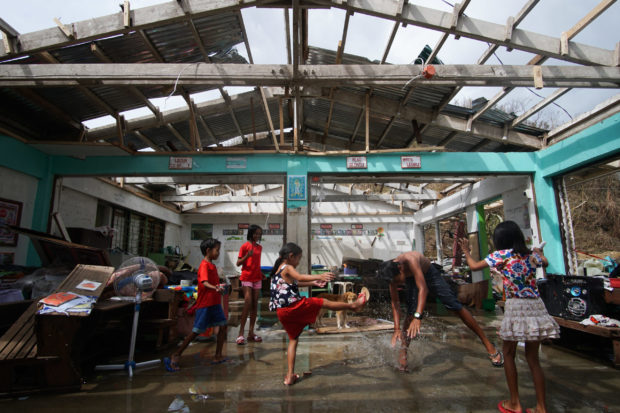
UNBROKEN PLAY Bicolano children frolic in rain puddles inside the severely damaged Sto. Domingo Elementary School in Virac, which used to serve as an evacuation center during intense typhoons that usually hit the province.
COVID-19 testing
Monterola said the Philippine Red Cross was also supplying potable water to the villages from its water sanitation facilities.
Aid from different parts of the country has started to arrive, but not quickly enough to ease the suffering of thousands of residents.
On Wednesday, Cua ordered that the coronavirus tests required of everyone going to the province would be waived for disaster response personnel. But they still need to present medical clearance certificates and travel orders before getting involved in relief operations, and to observe basic health measures, such as wearing face masks.
Cua assured his constituents that donations and relief goods will reach even the remotest areas in the province once roads are cleared.
Due to the damage to schools and the power outage, classes at all levels in the province remain suspended, he added.

